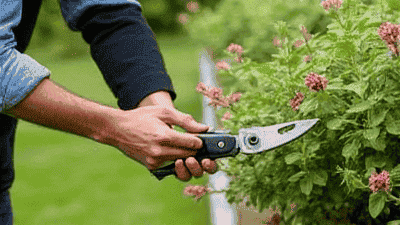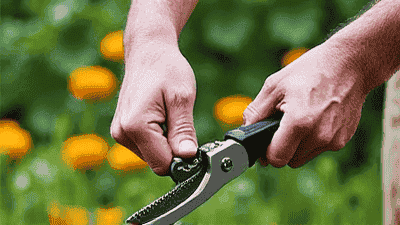
Pruning is a critical practice in horticulture that helps maintain the health and productivity of herb plants. Whether you're growing herbs for culinary use, medicinal purposes, or simply for their aromatic qualities, regular pruning will ensure that your plants remain vigorous and flavorful.
Pruning is not merely about cutting back plants; it is an art and science that enhances their growth and productivity. For herb plants, proper pruning can promote bushier growth, improve air circulation, and prevent diseases. It also encourages the development of new foliage and prevents leggy or spindly growth, which is crucial for herbs that are harvested frequently.
Promotes Bushier Growth: Regular pruning encourages lateral growth, leading to a fuller, bushier plant. This is especially important for culinary herbs, as a bushy plant yields more leaves.
Enhances Flavor and Aroma: Pruning stimulates the growth of new foliage, which is often more pungent and flavorful than older leaves.
Improves Air Circulation: Removing crowded or diseased foliage increases air circulation around the plant, reducing the likelihood of fungal infections and pests.
Extends Harvest Period: By pruning regularly, you can encourage new growth and sustain a longer harvest period throughout the growing season.
Removes Dead or Damaged Material: Pruning helps maintain the overall health of the plant by removing dead, damaged, or diseased leaves and stems.

When it comes to pruning herb plants, several basic techniques can be used. Let's explore these methods along with specific tips for popular herbs.
Pinching is a simple pruning technique that involves using your fingers to remove the growing tips of the plant. This method is commonly used on soft-stemmed herbs, such as basil, mint, and parsley.
Shearing involves cutting back a significant portion of the plant’s foliage to shape it and remove spent flowers. This technique is effective for herbs like chives, thyme, and oregano.
Selective pruning involves cutting specific stems or branches to improve the plant's overall structure and health. This method is commonly used for woody herbs such as rosemary and sage.
Deadheading is the practice of removing spent flowers from herb plants to encourage further blooming and prevent the plant from going to seed. This technique is often used with flowering herbs such as chamomile and borage.
Now that we've covered the basic pruning techniques, let's look at how to apply these methods to some popular herb plants.
Basil is a vigorous plant that benefits greatly from regular pruning. To maximize your harvest and promote bushiness, follow these guidelines.
Mint is known for its rapid growth, and proper pruning is essential to keep it in check.
Oregano thrives with regular harvesting and pruning.
Rosemary is a woody herb that requires selective pruning to maintain its health.
Thyme is a low-growing herb that benefits from both selective pruning and shearing.
Sage can benefit from both selective pruning and shearing.

To ensure successful pruning of your herb plants, consider the following best practices.
Always use clean and sharp pruning shears or scissors to prevent damage to the plant and reduce the risk of disease transmission. Sterilizing your tools before and after use can help maintain plant health.
The best time to prune most herbs is in the spring or early summer, during their active growth phase. Avoid heavy pruning during late fall or winter when the plants are dormant. For most herbs, regular light pruning throughout the growing season will yield the best results.
Keep an eye on the overall health of your herb plants. If you notice yellowing leaves, slow growth, or signs of disease, evaluate your pruning techniques and adjust as needed. Healthy plants will respond better to pruning.
While regular pruning is important, over-pruning can stress the plant and stunt its growth. Aim to remove no more than one-third of the plant's foliage at any given time.
After pruning, it’s a good idea to water your herb plants thoroughly. This will help support new growth and reduce transplant shock if you have removed a significant amount of foliage.
Regular pruning can expose plants to pests and diseases. After each pruning session, inspect your herbs for any signs of infestations or infections. Taking early action can help prevent larger problems down the road.
Pruning is an essential skill for maintaining healthy and productive herb plants. By employing basic pruning techniques and observing best practices specific to different herbs, you can enhance their growth, flavor, and overall vitality. Remember that proper pruning not only benefits your plants but also ensures a more abundant and enjoyable harvest.
Whether you are new to herb gardening or have a seasoned garden, incorporating regular pruning into your routine will help you achieve thriving, aromatic herbs that enhance your culinary endeavors and enrich your garden experience.